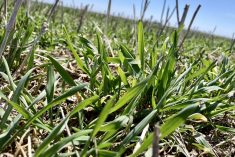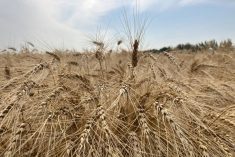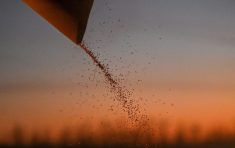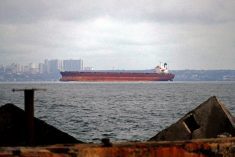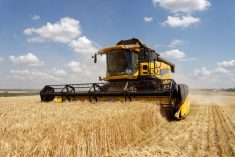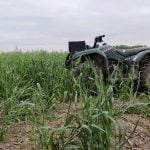Given the ongoing conflict in eastern Ukraine, the country might seem like a risky place to conduct a 10-day crop tour.
But Mike Lee’s confident he can pull it off.
“A lot of people think we’re completely nuts for going there. But to me, it’s not that crazy. It’s a fairly normal, straightforward place if you spend time there,” says Lee, an agronomist who has managed farms in western Ukraine.
Lee originally hails from the U.K. but has also worked in Kazakhstan, Uzbekistan and Russia. He’s currently planning the final details of a 4,000-kilometre crop tour that will take him and a couple of his colleagues through the main grain-growing regions of Russia and Ukraine.
Read Also
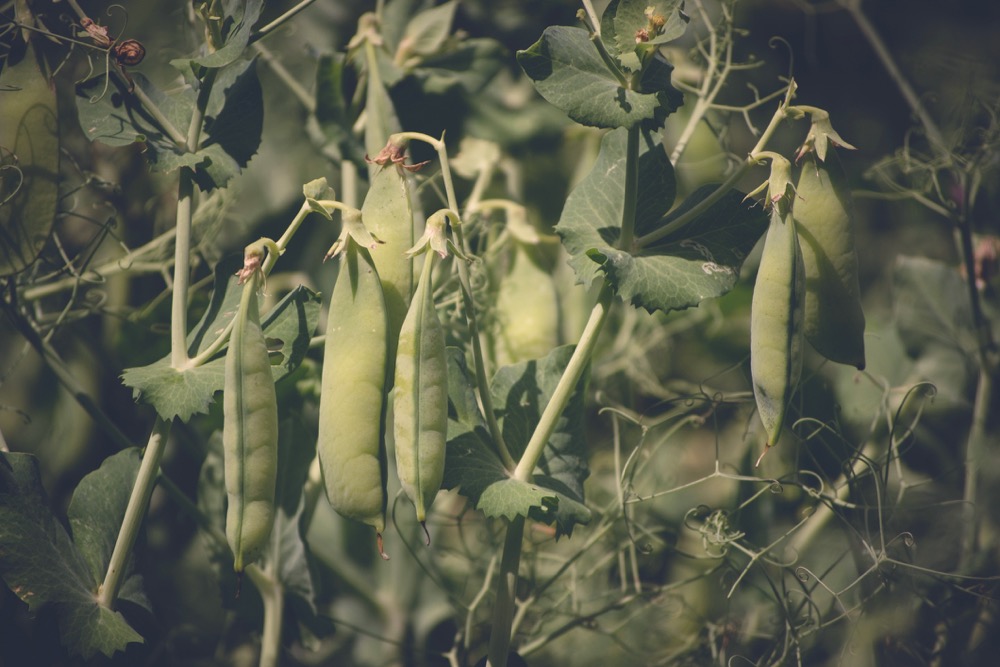
Pulse Weekly: Yields coming into focus
Provincial agricultural departments are reporting pulse yields higher than Statistics Canada’s September estimates.
Last June, during a 2,000-km trek around Russia, Lee saw a huge response to his tweets about crop conditions.
“So it was a crop tour in real time that we hadn’t planned,” he said. The experience inspired him to see if traders and others in the industry would support a planned crop tour, in exchange for independent crop data.
While crop tours are fairly common in North America, they’re not in Russia or Ukraine, Lee said. Grain industry players can try to draw conclusion from government updates, but those numbers can be speculative or politically-influenced, he adds.
Satellites also give a bird’s-eye view of crop conditions in the region, Lee said, but “it doesn’t really tell the full story, which you can only really get from boots on the ground. And that’s what I’m doing.”
Lee plans to produce a detailed report for paid subscribers that will complement existing data coming out of the region. The final report will include a spreadsheet of numbers that subscribers can analyze, along with observations, comments, photos and Lee’s opinion as an independent agronomist.
Subscribers will also be able follow the tour in real time, through a members-only Twitter account.
The April tour will focus on winter wheat, though Lee said he’ll also note moisture conditions and spring crops being seeded. He and his colleagues will take transects, where they’ll assess plant counts, growth stages, winterkill and other factors.
They’ll also visit at least four farms for a more in-depth study, he added.
“We’ll look at their crops in detail. We’ll talk to the guys on the ground and canvas their opinions on crop conditions, current economic situation, political situation, so on and so forth.”
But the April crop tour is just a trial run, as Lee gauges the global appetite for a series of tours throughout the growing season. He said he also plans to tour the region after spring crops have been planted, before harvest, and after farmers have seeded winter crops. He hopes to build a baseline to compare against official numbers, final yield and next year’s crop.
“Within that framework and over a number of seasons, I think we could build up something that could become increasingly valuable,” he said.
Subscribers can sign up to the first tour for a minimum of US$115. Within 10 days of announcing the first tour, Lee had raised enough funds to cover costs, he said.
Lee is now hoping to generate enough interest to follow through with the entire season. For more information on the crop tour, visit Lee’s blog.
Difficult times
While Lee is confident the tour will work, he’s well aware of the risks.
“It’s not so bad in Russia, but in Ukraine, it’s difficult times,” he said.
Lee is taking several precautions, such as keeping a tight lid on some details. For example, he’s not pre-advertising the route. At first, he thought about using drones for aerial photos, but quickly scrapped that idea. The tour will stick to iPhones and iPads for photos, he said.
He and his colleagues also plan to give the conflict zone in Ukraine a wide berth.
Over the last year, the conflict has had a direct and “catastrophic” impact on farms within the battle zone, Lee said. Producers lost livestock during the fighting or were forced to slaughter them because of feed shortages, according to a joint report by the Food and Agriculture Organizations and the Food Security Cluster.
Greenhouses and orchards were also shelled — and fighting prevented some farmers from seeding up to half their land last fall.
But the bigger picture, Lee said, is how the conflict has driven up interest rates and inflation. Low crop prices last year slowed cash flows to a trickle. Many farmers can’t access credit to buy inputs such as seed, fertilizer and fuel, and those who can are paying exorbitant interest rates.
Russian farmers are also struggling with limited, expensive credit and an input shortage, he added.
The big question is what farmers will do if winterkill is higher than normal. Farmers will need to keep operating, so Lee thinks many will reseed low-cost crops such as spring wheat and barley rather than pricier options such as maize, soy and sunflower.
Lee said he also thinks big farms, which are more vulnerable to cash and credit shortages, may seed fewer acres.
“And that’s going to filter through to next year as well. It’s going to have the knock-on effect where people haven’t made money this year. So how are they going to fund planting in 2016?”
Given that Ukraine is one of the world’s largest grain exporters, Lee said he thinks the country’s troubles will have a significant effect on supply.
The end result could be an uptick on grain prices, he said — but any price surge will come at a high cost for Ukrainians.
“People are dying in Ukraine. There’s nothing positive about it.”
— Lisa Guenther is a field editor for Grainews based at Livelong, Sask. Follow her @LtoG on Twitter.




